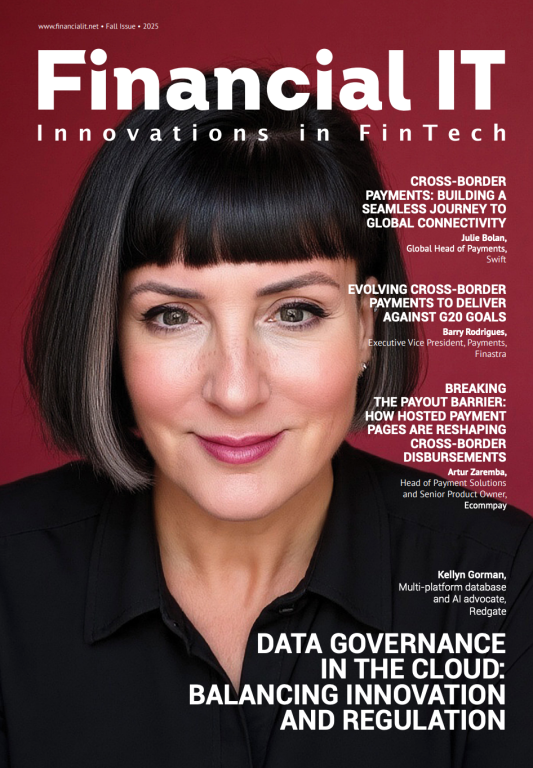Why Banks Need a Blended Approach to Win Customer Loyalty

- Mike Hall, Head of Retention at Medialab
- 12.02.2025 04:30 pm #CustomerLoyalty #BankingStrategy
In recent years, banking profits have been strong, with UK leaders reporting pre-tax gains of up to £24 billion. But alongside this success, competition has intensified. Fintech challengers are grabbing attention and market share, raising the bar with slick digital experiences, better personalisation, and tools designed around customer needs. As these disruptive players gain ground, traditional banks are being forced to play catch-up, but their pace of change isn’t quick enough.
Many banks still lean heavily on acquisition, striving to sustain growth by pumping resources into attracting new customers. But there’s a problem: without a strong focus on retention and engagement, those customers won’t stick around. One in five UK customers who switched their primary bank last year moved to a digital-first provider. That should be a wake-up call.
So, how do banks keep hold of their customers in a world where switching has never been easier? Let’s look at what needs to change.
Learn from Monzo: Customer Engagement Done Right
Monzo is a great example of how to do customer engagement well. Consistently ranked as one of the top banks in the UK for customer satisfaction, they’ve nailed the balance between providing great products and maintaining a strong focus on how they communicate with customers. Engagement isn’t an afterthought for Monzo — it’s baked into their product.
Monzo’s approach shows that forging lasting customer ties isn’t just about marketing campaigns, it’s about creating meaningful interactions at every stage of the journey. They use a smart mix of channels — email, SMS, push notifications, in-app messaging, and content cards — all working seamlessly together. Their communications are proactive, whether it’s reminding customers about upcoming bills, helping them set savings goals, or celebrating milestones. This blend of consistent connection and small, thoughtful actions builds trust and loyalty over time.
On top of ensuring that everything feels relevant and timely, their tone of voice is playful, direct, and transparent, making them stand out in a sector where many traditional players still rely on overly formal, jargon-heavy communication.
Traditional banks can take a lot from this playbook. Start by:
Proactive support: Use predictive analytics to spot when a customer might need help or could benefit from a specific product, and reach out before they have to ask.
Simplifying communication: Ditch the jargon and focus on being clear and helpful.
Getting the timing right: Make sure every interaction adds value, not noise.
Embrace Agility: Adopt Smarter Methods of Personalisation
One of the biggest barriers for traditional banks is the speed at which they move. Having worked in financial services, I’ve seen how slow progress can be. Even simple changes can take months to implement, with endless approval rounds and risk assessments dragging things out.
Fintechs, on the other hand, operate at speed. They test, learn, adapt, and launch, often in the time it takes a traditional bank to sign off on a single campaign. This agility is a huge competitive advantage and something banks need to take seriously. The bottom line? Banks need to find ways to test ideas and develop faster. Customers won’t wait, and neither will the competition.
One prime starting point is making better use of the data they already have and levelling up their approach to personalisation. Customers expect refined tailoring, especially at a time when more businesses are using advances in artificial intelligence (AI) to power timely, meaningful, and relevant experiences based on real-time data.
With access to large stores of customer data, banks are in a great position to deliver on these needs, but moving forward will mean being willing to evolve and experiment. Investing in emerging tools that can efficiently analyse first-party data sets will help them quickly identify trends, segment customer groups, and inform nimble personalisation across touchpoints, turning everyday interactions into moments that build trust and loyalty.
Here’s how they can do it:
Pilot small and scale fast: Start with small tests to prove value quickly, then roll out the winners.
Empower teams: Cut out unnecessary layers of approval and use automated tech to simplify processes, liberate time for innovation, and enable easy adoption of scaled personalisation.
Onboarding journeys: Make the first 60 days count. Use what you know about a customer to personalise their onboarding experience, like recommending tools, services or offers that match their needs.
Retention signals: Identify early signs of disengagement, like reduced app usage or fewer transactions, and step in with a personalised offer or message to re-engage them.
Strike the Right Balance Between Digital and Human Interaction
Nobody likes talking to a chatbot. They’re fine for quick queries or directing you to the right person, but striking that balance is key. Too often, chatbots become a frustrating barrier between customers and real support, potentially because most banks are still using bots that can only answer basic questions or refer customers to linked articles instead of actively solving their issues.
American Express is a standout example of how to get this right. Their chat experience makes you feel like you’re speaking to a real person — and often, you almost are. Even when automation is involved, it’s so seamless that it feels human. What sets Amex apart is their ability to pick up the conversation exactly where you left off. There’s no need to wait around for a response or repeat yourself. It’s more like a WhatsApp chat with a friend than a formal customer service interaction.
When used effectively, technology and human interaction can work together to create a better overall experience. It’s about being there for your customers in the moments that matter most — whether that’s through technology or a conversation with a person.
Fintech challengers have set the standard for digital convenience. Banks need to combine that convenience with the personal touch they’re already well-positioned to deliver.
Here’s how:
Focusing on handoffs: Use chatbots to guide customers to the right person quickly, rather than trying to solve everything with automation.
Prioritising continuity: Make sure conversations can be picked up across channels and teams, so customers never have to restart interactions.
Keeping it human: Even when using automation, design interactions to feel personal and empathetic.
Offering self-service: Provide digital tools for simple tasks but ensure customers can easily access human advisors for complex issues.
Overall, there is a rising need to move faster and smarter. If banks want to stand firm against fintech challengers and retain their market position, they need to rethink their approach to customer engagement. That means focusing on retention as much as acquisition and refining their communication strategies to maintain customer favour, including using data to personalise experiences, making their brand more accessible, and accelerating to align with the pace of change.
The competition isn’t slowing down. The question is: can banks move fast enough to keep up?



















